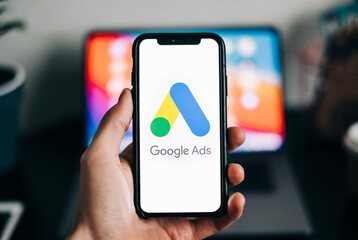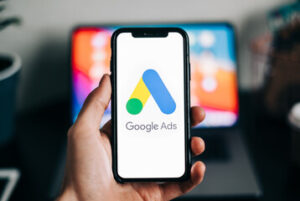Understanding the Costs and Performance of Google Ads

Google Ads are one of the best ways to promote your business online. They help you compete with large brands and grow your brand online. However, learning the right techniques to maximize ad performance is important. Visit Website to learn more.
 A key aspect of Google Ads is keywords. If you choose the right keywords, you can reach your target audience. You also need to know about clicks and impressions.
A key aspect of Google Ads is keywords. If you choose the right keywords, you can reach your target audience. You also need to know about clicks and impressions.
The cost-per-click associated with Google Ads is the price you pay for each click on your ad. It can vary based on your business and marketing goals. It is important to understand the different costs involved to maximize your return on ad spend. Several factors influence the cost-per-click of Google ads, including the keywords you use, your ad placement and how well your ads perform.
The price you pay for each click is determined by an auction process similar to the way Google determines search results. When a user enters a query, Google will record the term and match it with keywords advertisers and markets are bidding on. Once Google has this information, it will then calculate each contending ad’s “Ad rank” by using a formula that includes Quality Score and maximum bid. Only then will Google decide if and where the ad will be displayed in paid search results.
Your ad’s quality and relevance will determine your Quality Score, which is a rating between 1 and 10. Quality Score is determined by the search terms users type into Google, the relevancy of your ad and its landing page, and the quality of your ads’ copy. Getting the highest possible Quality Score will help you reduce your cost-per-click on Google Ads.
You can limit your ad costs by setting a daily budget. You can also set a target cost-per-click, which is the maximum amount you’re willing to pay for each click on your ad. You can also choose to target certain times of the day or particular geographic areas. You can also use conversion campaigns, which are a great way to boost your advertising performance.
The average CPC in Google Ads is between $1 and $2 per click on the search network, but you can save money by focusing on specific types of keywords. For example, you can use long-tail keywords, which are more specific than broad keywords and tend to have a lower average cost-per-click. Keep in mind, however, that consumer and shopping trends change overtime, and you should be ready to adjust your keyword bidding strategy accordingly.
Cost-per-acquisition
The cost-per-acquisition associated with Google Ads is an important metric to keep in mind when developing your paid marketing strategy. It allows you to compare the effectiveness of your various marketing channels and determine which ones are working best for your business. Cost-per-acquisition is calculated by dividing the total cost of media spend (whether it’s advertising or other direct costs) by the number of new customers acquired through the channel/campaign.
Scalability is another key benefit of Google Ads, allowing you to grow your business online without worrying about the initial investment. The scalability of Google Ads means that when you discover a campaign that performs well, you can pour more money into it to scale the results you’re seeking. This is a great way to improve your ROI, and to test out new sales funnels or products.
Another benefit of Google Ads is the speed with which it produces results. While other methods such as SEO can take months to produce any real results, Google Ads can get your campaigns up and running within a few hours. Once you’ve achieved the desired results, you can then analyze and optimize your campaign for even better ROI.
Using Google Ads to find the right keywords can help you target the search terms that matter most to your audience. This will increase the number of clicks on your ads and increase your quality score, which is an important factor in determining your AdRank. This will in turn increase your ad placement and lower your cost-per-click.
Google Ads can also be used to generate a targeted list of potential leads, which you can use for remarketing in other online marketing channels. This will improve the performance of your other marketing efforts, and help you achieve your overall business goals.
You can use the Target CPA bidding strategy to set bids that help you get as many conversions as possible at or below your target cost per action. This is ideal for B2B and B2C lead generation, and is a great way to make the most of your marketing budget.
Cost-per-lead
The cost-per-lead (CPL) is a measurement of how much it costs to get a new customer as a result of your Google Ads campaign. This metric helps you determine how profitable your advertising campaigns are so that you can make better decisions about where to invest your budget. It is also a great way to see how your marketing strategy compares to others.
Cost-per-lead can vary based on your industry and the keywords you choose to target. For example, a highly competitive industry such as legal, accounting or real estate will have higher costs than other industries. Additionally, consumer trends and shopping habits can change over time, meaning you may need to adjust your keyword bidding strategy.
Fortunately, there are ways to decrease your CPL and improve your ROI. For example, you can increase the number of leads you get by targeting relevant search terms. This will help you reduce the cost of your ad spend and generate more qualified business leads. Additionally, you can optimize your landing page to be more user-friendly and increase your ad relevance. This will also help you improve your ad’s Quality Score, which is a ranking based on the relevance of your ads and their landing pages.
Another way to lower your CPL is to use conversion tracking. This enables you to track the number of leads you get from your Google Ads campaign and measure their conversion rate. This will allow you to compare your performance to other campaigns and see which ones are most effective. Lastly, you can use social media to generate leads and boost your CPL by boosting clicks and conversion rates.
The cost-per-lead associated with Google Ads varies by industry and keywords, but it is important to know how to calculate it before you start using it for your marketing campaign. A good rule of thumb is that the cost-per-lead should be equal to or less than your average gross profit per sale. This will ensure that your leads are worth the investment. Lastly, remember to set a realistic budget and keep your campaigns running smoothly.
Cost-per-conversion
Google Ads is an excellent tool for small businesses that can help them reach new customers and grow their business. However, it is important to understand how the platform works before you start spending your advertising budget. This will help you maximize your return on investment and reach more potential customers. This will also help you avoid making costly mistakes.
First, you must understand that Google Ads is an auction-based system. Google determines your CPC by comparing your bid to the other advertisers bidding for the same keywords. Your bid is not the only factor that determines your CPC – other factors include your Quality Score, which is determined by your website’s experience and relevance to the search query. After your ad is reviewed, Google will then give you an Ad Rank, which determines where your ad will appear in the search results.
Once you know how the auction-based system works, you can optimize your campaign to get better results. This is not easy, but it is possible to achieve a lower cost per conversion using the right strategy.
You can start by focusing on the most competitive keywords. This will make it easier to beat your competitors in the bidding process. In addition, you can use the tools in the Google Ads interface to monitor your ad performance. You can view your daily average cost, clicks, and CTR to identify areas that need improvement.
Another key metric to track is your return on ad spend (ROAS). This measures the amount of revenue you generate from ads divided by your total advertising costs. It is a great way to compare your campaign performance against other similar campaigns. This metric is useful for both retailers and lead generation companies, as it allows you to measure the profitability of your marketing efforts.
You can also use Google Ads to target people who are more likely to convert. For example, you can create audiences based on specific demographics or locations. You can even use retargeting to ensure that your ads are shown in front of potential customers who have visited your site or made a purchase in the past. In this way, you can boost the effectiveness of your Google Ads and increase your ROI.
